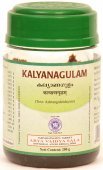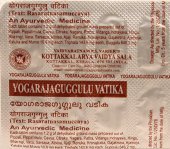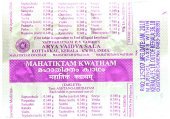Indrayava, Indra-yava, Imdrayava: 14 definitions
Introduction:
Indrayava means something in Hinduism, Sanskrit, Marathi, biology. If you want to know the exact meaning, history, etymology or English translation of this term then check out the descriptions on this page. Add your comment or reference to a book if you want to contribute to this summary article.
In Hinduism
Ayurveda (science of life)
Cikitsa (natural therapy and treatment for medical conditions)
Source: Wisdom Library: Ayurveda: CikitsaIndrayava (इन्द्रयव) is a Sanskrit name referring to the seeds of Kuṭaja (Wrightia antidysenterica, “Kurchi fruit”), from the Apocynaceae family. The term is used throughout Ayurvedic literature such as the Carakasaṃhitā. This synonym was identified by Amarasiṃha in his Amarakośa (a Sanskrit botanical thesaurus from the 4th century). The word Indrayava is composed of Indra and yava (‘seed’).
According to the Mādhavacikitsā (7th century Ayurvedic work), the plant (Indrayava) is also mentioned as a medicine used for the treatment of all major fevers, as described in the Jvaracikitsā (or “the treatment of fever”) chapter. In this work, the plant is also known by the names Kuṭaja, Kaliṅga, Vatsaka and Indrabīja.
Source: Ancient Science of Life: Botanical identification of plants described in Mādhava CikitsāIndrayava (इन्द्रयव) (or Kuṭaja, Kaliṅga, Vatsaka) refers to (the fruit of) the medicinal plant Holarrhena antidysenterica (Roth) A. DC, and is used in the treatment of atisāra (diarrhoea), according to the 7th century Mādhavacikitsā chapter 2. Atisāra refers to a condition where there are three or more loose or liquid stools (bowel movements) per day or more stool than normal. The second chapter of the Mādhavacikitsā explains several preparations [including Indrayava] through 60 Sanskrit verses about treating this problem.
Kalpa (Formulas, Drug prescriptions and other Medicinal preparations)
Source: Ancient Science of Life: Yogaśataka of Pandita VararuciIndrayava (इन्द्रयव) refers to a medicinal plant known as Holarrhena antidysenterica Wall., and is mentioned in the 10th century Yogaśataka written by Pandita Vararuci.—The Yogaśataka of Pandita Vararuci is an example of this category. This book attracts reader by its very easy language and formulations which can be easily prepared and have small number of herbs (viz., Indrayava). It describes only those formulations which are the most common and can be used in majority conditions of diseases.
Source: Shodhganga: Edition translation and critical study of yogasarasamgrahaIndrayava (इन्द्रयव) is another name for “Indravṛkṣa” and is dealt with in the 15th-century Yogasārasaṅgraha (Yogasara-saṅgraha) by Vāsudeva: an unpublished Keralite work representing an Ayurvedic compendium of medicinal recipes. The Yogasārasaṃgraha [mentioning indrayava] deals with entire recipes in the route of administration, and thus deals with the knowledge of pharmacy (bhaiṣajya-kalpanā) which is a branch of pharmacology (dravyaguṇa).
Unclassified Ayurveda definitions
Source: Ancient Science of Life: Vaidyavallabha: An Authoritative Work on Ayurveda TherapeuticsIndrayava (इन्द्रयव) or Cakrāhva refers to Holarrhena antidysenterica, and is the name of a medicinal plant dealt with in the 17th-century Vaidyavallabha written by Hastiruci.—The Vaidyavallabha is a work which deals with the treatment and useful for all 8 branches of Ayurveda. The text Vaidyavallabha has been designed based on the need of the period of the author, availability of drugs (viz., Indrayava) during that time, disease manifesting in that era, socio-economical-cultural-familial-spiritual-aspects of that period Vaidyavallabha.

Āyurveda (आयुर्वेद, ayurveda) is a branch of Indian science dealing with medicine, herbalism, taxology, anatomy, surgery, alchemy and related topics. Traditional practice of Āyurveda in ancient India dates back to at least the first millenium BC. Literature is commonly written in Sanskrit using various poetic metres.
Biology (plants and animals)
Source: Wisdom Library: Local Names of Plants and DrugsIndrayava in the Sanskrit language is the name of a plant identified with Cleistanthus collinus (Roxb.) Benth. ex Hook.f. from the Phyllanthaceae (Amla) family having the following synonyms: Lebedieropsis orbicularis. For the possible medicinal usage of indrayava, you can check this page for potential sources and references, although be aware that any some or none of the side-effects may not be mentioned here, wether they be harmful or beneficial to health.
Indrayava [इंद्रयव] in the Sanskrit language is the name of a plant identified with Holarrhena pubescens (Buch.-Ham.) Wall. ex G. Don from the Apocynaceae (Oleander) family having the following synonyms: Holarrhena antidysenterica.

This sections includes definitions from the five kingdoms of living things: Animals, Plants, Fungi, Protists and Monera. It will include both the official binomial nomenclature (scientific names usually in Latin) as well as regional spellings and variants.
Languages of India and abroad
Marathi-English dictionary
Source: DDSA: The Molesworth Marathi and English Dictionaryindrayava (इंद्रयव).—m S See the derivative indrajava.
Marathi is an Indo-European language having over 70 million native speakers people in (predominantly) Maharashtra India. Marathi, like many other Indo-Aryan languages, evolved from early forms of Prakrit, which itself is a subset of Sanskrit, one of the most ancient languages of the world.
Sanskrit dictionary
Source: DDSA: The practical Sanskrit-English dictionaryIndrayava (इन्द्रयव).—seed of the Kutaja tree.
Derivable forms: indrayavaḥ (इन्द्रयवः), indrayavam (इन्द्रयवम्).
Indrayava is a Sanskrit compound consisting of the terms indra and yava (यव).
Source: Cologne Digital Sanskrit Dictionaries: Shabda-Sagara Sanskrit-English DictionaryIndrayava (इन्द्रयव).—mn.
(-vaḥ-vaṃ) The seed of the Wrightea antidysenterica. E. indra the plant, and yava seed: it is used medicinally in cases of diarrhœa, dysentery, &c.
Source: Cologne Digital Sanskrit Dictionaries: Monier-Williams Sanskrit-English Dictionary1) Indrayava (इन्द्रयव):—[=indra-yava] [from indra] n. Indra’s grain
2) [v.s. ...] the seed of the Wrightia Antidysenterica, [Suśruta]
Source: Cologne Digital Sanskrit Dictionaries: Yates Sanskrit-English DictionaryIndrayava (इन्द्रयव):—[indra-yava] (vaḥ-vaṃ) 1. m. n. Wrightea antidysenterica.
[Sanskrit to German]
Sanskrit, also spelled संस्कृतम् (saṃskṛtam), is an ancient language of India commonly seen as the grandmother of the Indo-European language family (even English!). Closely allied with Prakrit and Pali, Sanskrit is more exhaustive in both grammar and terms and has the most extensive collection of literature in the world, greatly surpassing its sister-languages Greek and Latin.
Kannada-English dictionary
Source: Alar: Kannada-English corpusIṃdrayava (ಇಂದ್ರಯವ):—
1) [noun] the plat Wrightia zeylanica ( = W. antidysentrica) tinctoria of Apocynceae family.
2) [noun] its seed.
Kannada is a Dravidian language (as opposed to the Indo-European language family) mainly spoken in the southwestern region of India.
See also (Relevant definitions)
Ends with: Madhuindrayava.
Full-text (+6): Kutaja, Upavaka, Indrabija, Indrasahva, Indraphala, Indrahva, Intiriyavam, Indravija, Indrajava, Kalingaka, Shakrabija, Bhadrayava, Kalinga, Indradru, Aragvadhadi, Pippalyadi, Vatsaka, Vamana, Cakrahva, Vatsakadikvatha.
Relevant text
Search found 10 books and stories containing Indrayava, Indra-yava, Imdrayava, Iṃdrayava; (plurals include: Indrayavas, yavas, Imdrayavas, Iṃdrayavas). You can also click to the full overview containing English textual excerpts. Below are direct links for the most relevant articles:
Sushruta Samhita, Volume 6: Uttara-tantra (by Kaviraj Kunja Lal Bhishagratna)
Chapter XL - Symptoms and treatment of Diarrhea (Atisara) < [Canto III - Kaya-chikitsa-tantra (internal medicine)]
Chapter XXIII - Therapeutics of nasal diseases < [Canto I - Shalakya-tantra (ears, eyes, nose, mouth and throat)]
Chapter LVI - Symptoms and Treatment of Cholera (Visuchika) < [Canto III - Kaya-chikitsa-tantra (internal medicine)]
Garga Samhita (English) (by Danavir Goswami)
Verses 2.10.14-17 < [Chapter 10 - Description of Śrī Kṛṣṇa’s Herding the Cows]
The Garuda Purana (by Manmatha Nath Dutt)
Chapter CXCV - Medical treatment of female complaints < [Dhanvantari Samhita]
Chapter CXCVI - Therapeutic properties of drugs < [Dhanvantari Samhita]
Chapter CXCIII - Medical treatment of fever etc < [Dhanvantari Samhita]
Atharvaveda and Charaka Samhita (by Laxmi Maji)
Treatment of Rakta-vikāra (Haemoptysis) < [Chapter 3 - Diseases and Remedial measures (described in Atharvaveda)]
4b. Leprosy (Kuṣṭha) in the Caraka-saṃhitā < [Chapter 5 - Diseases and Remedies in Atharvaveda and Caraka-Saṃhitā]
Arśa (piles) according to Caraka < [Chapter 4 - Diseases and Remedial measures (described in Caraka-saṃhitā)]
Sushruta Samhita, volume 4: Cikitsasthana (by Kaviraj Kunja Lal Bhishagratna)
Chapter XXXVIII - The treatment with a Nirudha-vasti
Chapter IX - The medical treatment of cutaneous affections
Charaka Samhita (English translation) (by Shree Gulabkunverba Ayurvedic Society)
Chapter 5 - The Pharmaceutics of Kurchi (vatsaka-kalpa) < [Kalpasthana (Kalpa Sthana) — Section on Pharmaceutics]
Related products
(+10 more products available)





